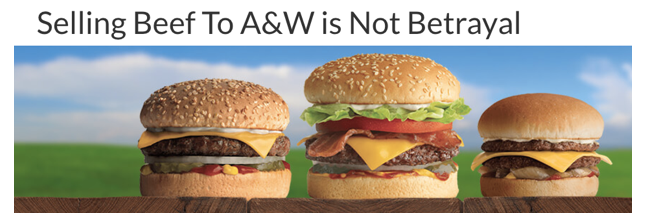Related to food safety is the debate about whether animals should be treated with growth hormones to increase yields, or antibiotics for health. Those who support the argument say there are no adverse health effects to human consumption or the ecosystem (see the Cattle Site 2007). Rather, there are positive economic and social effects because food is healthier and yields are higher, thereby increasing returns to farmers and ranchers, and ultimately leading to lower prices in the grocery store. This is only one perspective.
The other is that antibiotics are unnecessary and negatively affect the environment by making super strains of bugs resistant to antibiotics. Similarly so with hormones. Injecting animals with growth hormones is not good for the animals, and detrimental to human health (see Organic Centre 2007). So which side is correct? You can find a tremendous number of scientific papers and opinion articles supporting both sides. You will also see that some arguments are economic (based on production, costs/benefits, and prices), while some are environmental (better versus worse for the ecosystem), and social (food without additives versus greater amounts and cheaper foods). There are also ethical arguments to be made (the right to eat hormone-free, animal rights, and the obligation to feed a growing population).
A real “beef” is the one Canadian ranchers have with A&W. See the article linked to Figure 10-8.

Figure 10-8: The controversy continues over hormone-free beef. http://www.cbc.ca/news/canada/edmonton/ranchers-have-a-beef-with-new-a-w-hamburger-campaign-1.2426659 Source: Permission: This material has been reproduced in accordance with the University of Saskatchewan interpretation of Sec.30.04 of the Copyright Act.
As many of you already know, A&W promotes the use of hormone-free beef in its burgers. This simple act has unleashed a torrent of controversy and boycotts against the hamburger joint. The reason being that much of its supply must be sourced outside of Canada because there is currently not enough domestic hormone-free production.
Another source of consternation is the assertion by A&W that hormone-free beef is “better.” The arguments I presented above give you an idea that it’s difficult to determine what “better” really means, and especially as perceived by the consumers. If more consumers want to eat A&W burgers as opposed to other burgers (for which the beef is sourced in Canada), what will the effects be on Canadian cattlemen?
Let’s consider the economic effects of A&W’s decision to go hormone-free. First, the two types of beef look identical. The only difference is that one was raised with growth hormones and the other wasn’t (ditto for antibiotics). The taste, look, and feel are virtually indistinguishable. And we know that Burgers can be considered substitutes – you either eat one type of beef burger or the other. A&W’s marketing campaign has been powerful and the demand for the hormone-free burger has increased in one year by 7.9% and over two years by over 13% due to change in tastes/preferences (Haney 2016, see figure 10-9). What does that mean for other types of burgers? Likely that demand has decreased. Considering where the regular beef is coming from, decreased demand for Canadian beef might be not good for domestic producers – quantity and price will decrease causing revenue to fall.

Figure 10-9: Hormone-free burgers. Source: https://www.realagriculture.com/2016/03/selling-beef-aw-not-betrayal/ Permission: This material has been reproduced in accordance with the University of Saskatchewan interpretation of Sec.30.04 of the Copyright Act.
On the other hand, the increased demand for hormone-free beef provides an opportunity to capitalize on the growing demand for a specific type of product. If the price premiums are high enough, it might be worthwhile for traditional producers to switch to hormone-free production.
What are your thoughts on hormone-free beef? You might also consider the situation at the margin by asking how much hormone is used per animal… is it enough to warrant negative health effects on the animal, or on the final consumer of the meat? You might also consider the problem of labelling – how do we really know it’s hormone-free? Is it tested and certified? Could there be information asymmetry?
